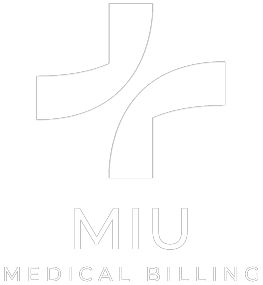Introduction
Medical billing is quite a thorough exercise and is as documentary and procedural as possible. There should be a prior understanding of an EOB (Explanation of Benefits) and ERA (Electronic Remittance Advice) in medical billing. Notably, such documents have essential roles in satisfying the goals of transparency and efficiency of cases dealing with claims. This blog will assist the reader in learning the position of both EOB and ERA but mainly focus on a frequently confusing area of medical billing.
What is an EOB in Medical Billing?

EOB stands for Explanation Of Benefits in Medical Billing. In insurance, an EOB explains a bill forwarded to a patient and a healthcare provider each time a specific medical service is prepared.
Role of EOB in Medical Billing:
- Service Details: Describes the activities given in the form of services.
- Coverage Information: Stresses the segment protected by the insurance policy.
- Patient Responsibility: Provides the amount you pay out of pocket regarding the deductible, co-pay, or co-insurance.
- Denials or Adjustments: Body kits, Dentersis/Explanations for denials or claims reductions.
The EOB is used by providers and patients, and through its use, claims, and payments are reported and thus monitored. While EOBs are still mostly on paper, most insurers nowadays provide their customers with electronic EOBs.
What is an ERA in Medical Billing?
An ERA or Electronic Remittance Advice is an electronic form completed for refund advice, payments of the claims, and any adjustments. Electronic and an automated equivalent of the paper EOB, transmitted between payers and providers.
Role of ERA in Medical Billing:
Payment Information: Discuss how insurers pay.
- Claim Adjustments: It provides code accounts for variation or non-payment of amount due due to factors such as billing mistakes of the account.
- Efficiency: They make it possible to complete tasks to a higher speed than would be in the circumstance of writing on paper.
ERAs are also integrated with the provider’s billing system; thus, there is no tool for manually matching the claim records. Such a format enhances the HIPAA and increases the billing cycle of this kind of format.
Difference between EOB and ERA in Medical Billing
It benefits medical billing to learn about the differences between ERA and EOB. Here are the main distinctions:
Format:
•EOB: On paper only, but the insurers often provide the clients the possibility of its electronic completion.
•ERA: Completely paperless, done online.
Transmission:
•EOB: Sent through the mail in patient and provider copies.
•ERA: Transmitted through electronic media primarily via computerized and secured systems such as EDI.
Processing Speed:
•EOB: Requires individuals to lift objects physically, thus exposing possible delays.
•ERA: Accelerates the turn-around time of the claims through technology.
Content and Use:
•EOB: Concern with patient accountability as well as with health insurance.
•ERA: It provides a detailed denial code and has interfaces with the billing system for reconciliations.
The differences should help shed light on EOB and ERA’s roles in medical billing processes.
Understanding of the ERA denial codes:
The findings of this research show that ERA denial codes are essential in addressing claim problems. These codes define the reason for denial or reduced payment of claims to enable providers to unmask mistakes.
Importance of ERA Denial Codes:
- Claim Reconciliation: It enables the tracking of claims with ease and accurate resolution.
- Error Identification: Identifies causes of claims denial to correct them.
- Common Codes: Some codes include missing information or non-covered services.
When billing software translates the ERA denial codes, managing the claims becomes easier and positively impacts the practice.
Advantages of Leveraging on ERA over EOB in Medical Billing
Adopting ERA in medical billing offers several advantages over traditional EOBs:
Enhanced Efficiency: ERAs can also dispense with the manual input of data, thereby avoiding errors and hastening the billing cycle.
Real-Time Updates: Electronic transmission offers quick access to the status of the claims, and fast resolution of the disputes can therefore be expected.
Improved Tracking: ERP information is connected for complete reporting and application of efficient interaction processes throughout automated systems.
Cost Savings: They also reduced the administration costs related to using physical EOBs in July.
When Should Providers Use EOB vs. ERA?

Though ERA in medical billing offers numerous benefits, there are scenarios where EOBs remain relevant:
Situations for EOB Usage:
- For patients who prefer paper-based records.
- When dealing with insurers that do not offer ERA.
Integrating Both Documents:
Providers should implement workflows that accommodate EOB and ERA to ensure flexibility and compliance with legal requirements.
Best Practices:
- Use ERA for claim processing whenever possible.
- Aware that the patients of interpreting EOBs to eliminate confusion.
- Stay updated on regulatory requirements for document usage.
Conclusion
It is, therefore, essential to have a clear insight into what EOB and ERA mean in the medical billing processes. While EOBs are mostly patient communication aids, ERAs seamlessly transform bill payments using paperless technology. Understanding more about the EOB and ERA differences in medical billing allows services to advance, decreases claim rejection rates, and benefits the patients. The transition to other electronic systems like ERA is the change to medical billing and a shift toward a faster and more accurate process.




